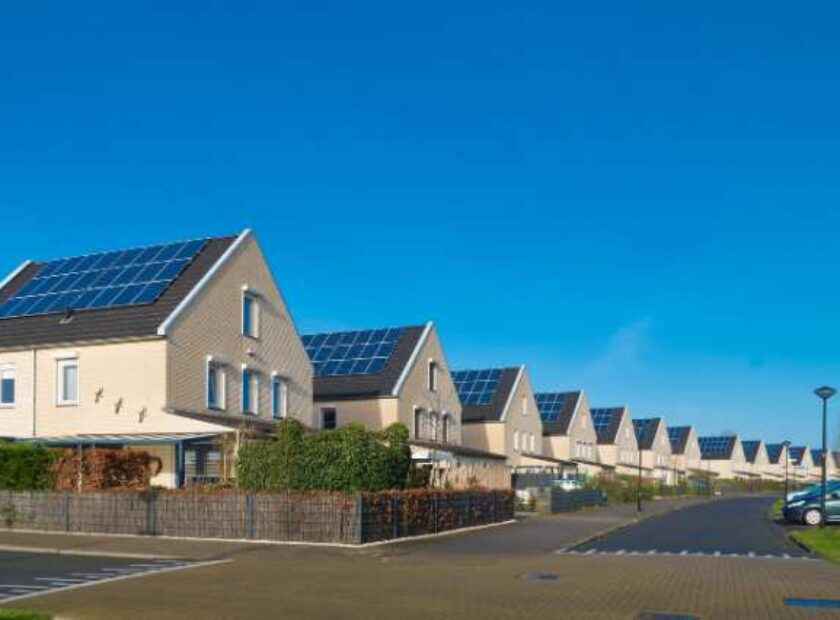Scaling Up: How Gridscape’s Flexible Microgrid Solutions Meet Growing Urban Demands

In today’s rapidly evolving urban landscapes and industrial sectors, the demand for energy solutions that are not only sustainable but also highly adaptable is more critical than ever. Microgrid technology, known for its ability to provide reliable, localized energy production and distribution, faces the challenge of keeping pace with fluctuating and growing energy needs. This is where scalability becomes essential. Scalable microgrids represent a strategic investment in future-proofing urban and industrial energy systems against the unpredictable variables of growth, technological evolution, and environmental policy shifts. Here are the nuanced benefits of adopting scalable microgrid solutions:
Adaptive capacity expansion: Urban and industrial growth demands energy infrastructure that can dynamically expand. Scalable microgrids meet this need by enabling capacity increases without overhauling the entire system, facilitating sustainable urban development and resource management.
Financial modulation and risk mitigation: Scalable microgrids allow for phased financial investment, making it feasible to start small and expand as necessary.
Technological adaptiveness: The landscape of energy technology is continually advancing. Scalable microgrids are designed for easy integration of new technologies, ensuring that energy systems remain efficient and compliant with upcoming standards and regulations, thus protecting investments from becoming outdated.
Resilience scaling with urban growth: As cities grow, the complexity and scale of infrastructure vulnerabilities increase. Scalable microgrids enhance resilience, expanding their protective reach as new areas develop, ensuring continuous energy security and operational stability.
Customized energy solutions for diverse applications: Energy needs vary significantly across different urban and industrial sectors. Scalable microgrids can be specifically tailored to diverse energy consumption patterns, enhancing overall energy efficiency and reducing operational costs.
Gridscape’s approach to microgrid design exemplifies the practical application of scalability in energy systems, making them a cornerstone in the adaptive infrastructure needed for modern cities and industries. Here’s how Gridscape microgrids are scalable and their significance in urban and industrial energy strategies:
Gridscape’s scalable microgrid solutions
Gridscape microgrids are engineered with modularity and flexibility at their core, which allows them to effectively meet the diverse and evolving energy demands of urban environments and industrial complexes. This scalability is achieved through several key features:
Modular design: Gridscape utilizes a “Microgrid-in-a-box” approach, where components such as energy generation, storage, and management systems are pre-designed in modular units. This design enables quick and easy scaling up or modification as energy demands change, without significant disruptions to existing operations.
Advanced integration capabilities: Gridscape microgrids are built to seamlessly integrate with both existing energy infrastructure and forthcoming innovations in renewable energy, storage technology, and smart grid applications. This integration capability ensures that Gridscape systems can continuously evolve alongside technological advancements and regulatory changes.
Customizable configurations: Recognizing that no two cities or industries are alike, Gridscape designs its microgrids to be highly customizable. This adaptability allows for tailored solutions that specifically address the unique energy profiles, geographic characteristics, and economic considerations of each client, ensuring optimal efficiency and functionality.
Smart management systems: At the heart of Gridscape’s microgrids are sophisticated energy management systems capable of analyzing and optimizing energy usage in real-time. These systems support scalability by allowing microgrids to dynamically adjust to fluctuations in energy demand, generation capacity, and storage needs, ensuring sustained performance across a growing network.
Role of Gridscape Microgrids in Urban and Industrial Contexts
In urban and industrial contexts, where energy demands are not only high but also highly variable, Gridscape’s scalable microgrids play a pivotal role:
Supporting urban expansion: As cities expand, Gridscape microgrids can be scaled to incorporate new residential areas, commercial zones, critical facilities, buildings etc into the city’s energy network, facilitating sustainable growth and resilience.
Enhancing industrial adaptability: Industries facing rapid growth or technological shifts can leverage Gridscape’s scalable solutions to quickly adapt their energy infrastructure, ensuring continuous operation and compliance with environmental standards. Not only this industries that need to charge Ev fleets can use Gridscap’s microgrids.
Driving sustainability initiatives: By enabling more efficient use of renewable energy and reducing reliance on fossil fuels, Gridscape microgrids contribute significantly to the sustainability goals of cities and industries, reducing carbon footprints and enhancing energy independence.
Improving resilience and emergency preparedness: Scalable microgrids enhance the ability of cities and industries to maintain critical operations during power outages or disasters, providing a scalable safety net that grows with the community or enterprise.
Gridscape’s scalable microgrid solutions not only address current energy needs but are also designed to anticipate and adapt to future challenges, making them an essential component of modern energy strategies aimed at fostering sustainable, resilient, and adaptive urban and industrial environments.






